Our guide to choosing the best cereals

svl861 - stock.adobe.com.
The information for this article was compiled by Kaamilah Mitchell, with help from Suraya Bunting.
Then: Corn flakes or raisin bran? Grape-Nuts or shredded wheat? Now: Probiotic or protein? Keto or grain-free? Thanks to the low-carb craze and other “wellness” trends, the cereal aisle is morphing.
But some things never seem to change. It still takes an avid label reader—and maybe a magnifying glass—to find an honest-to-goodness whole-grain cereal and sidestep most of the added sugar. Lucky for you, that’s all in our guide.
Click here for the full chart of our Best Bites and other cereals.
1. Get whole grains. See “100% whole grain” on the label? You can skip to number 2.
What about confusing claims like “10 grams whole grain” or “first ingredient whole grain”? They’re no guarantee. In that case, check the ingredients list:
■ Wheat & corn. Is wheat flour listed as “whole” or “whole grain”? If not, assume it’s refined. Ditto for corn, corn meal, or corn flour. “Degerminated” corn is also refined.
■ Rice. Is rice or rice flour “whole” or “brown”? If not, assume it’s refined.
■ Other grains & flours. Oats, sprouted grains, and “ancient” grains like quinoa, millet, and sorghum are typically whole grains, even if they don’t say so.
■ Bran. Bran is the fiber-rich outer layer that’s stripped off when grains are refined. So we count it as “whole.”
Our Best Bites are all—or nearly all—whole grain. “Nearly all” means the first two grain ingredients are typically whole grain or bran. (We allowed Best Bites to have a refined grain far down in the ingredients list because that means there’s so little of it.)
2. Check the serving size. Cereal servings can be as little as ¼ cup...or as much as 1½ cups.
Why the wide range? The serving size is the fraction of a cup that comes closest to 30 grams for light (less dense) cereals or 55 grams for heavy (denser) cereals. (If your cereal has the new Nutrition Facts label—it’s the one with calories in big print and a line for added sugars—the serving is the fraction of a cup that comes closest to 40 or 60 grams.)
Warning: Some granolas—like Effi, Purely Elizabeth, and bags of Nature’s Path—use the serving size for snacks (30 grams) instead of the one for heavy cereals. Sneaky. Our chart doubles their numbers.
But what matters is how much ends up in your bowl. More than a serving? Multiply.
3. Slash sugar. Until 2020, Nutrition Facts labels don’t have to list added sugars separately from total sugars, which include the naturally occurring sugars in fruit and milk. So our Best Bites have no more than 5 grams (about 1 teaspoon) of total sugars for light cereals or 9 grams (2 teaspoons) for heavy cereals.
Most cereals have little or no fruit, so just about all of their total sugar is added. Two notable exceptions: raisin bran and muesli. We waived the total sugar limit for Best Bites if fruit came before an added sugar in the ingredients list.
In search of a Best Bite with zero added sugar? Two good bets: plain shredded wheat (add your own fresh fruit) and Bob’s Red Mill Old Country Style Muesli.
4. Focus on unprocessed fiber. Our Best Bites have no fiber minimum because Nutrition Facts labels don’t say how much is intact, unprocessed fiber and how much is processed (from added inulin, chicory root, soluble corn fiber, or other sources). Processed fibers may not work as well as the real thing.
Whole-grain wheat, oats, and their bran have the most unprocessed fiber. Brown rice and whole-grain corn have less.
5. Be skeptical. Does a healthy cereal need fewer carbs or added protein, probiotics, or vitamins? Read on.
6. Try some of our favorite Best Bites. Here are five:
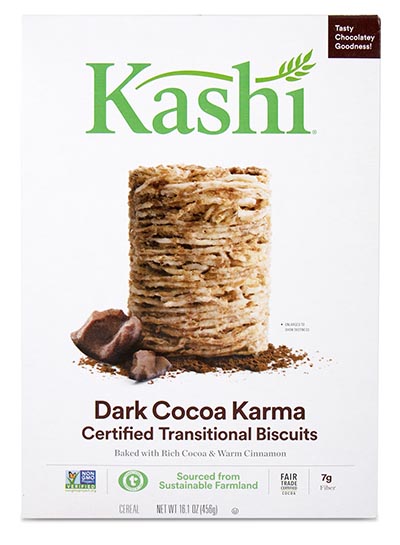
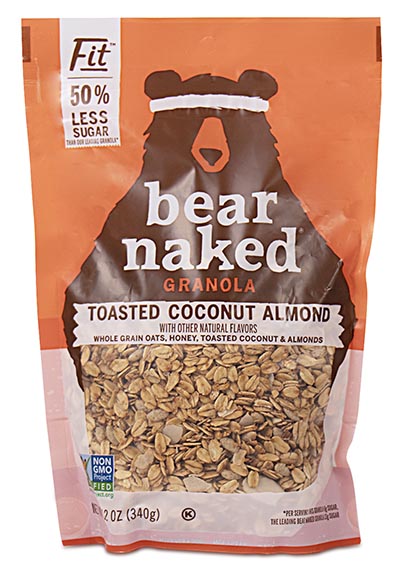
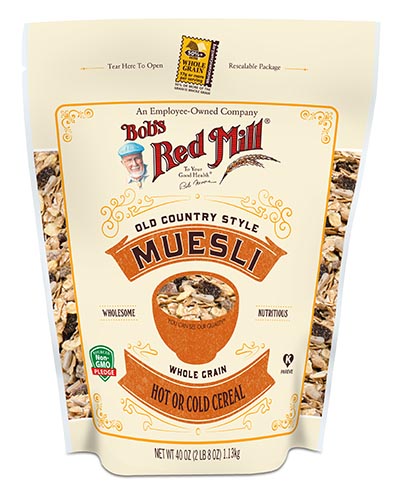
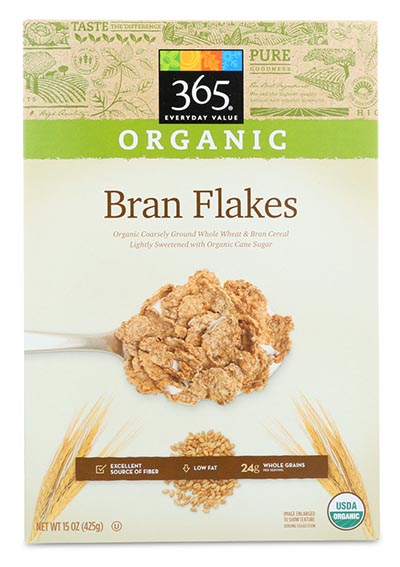
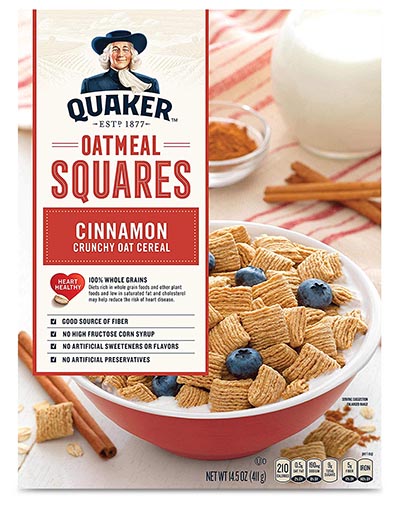
No Keto Magic
The ketogenic diet—a very-low-carb diet with just 20 to 50 grams of carbs a day—was the most-Googled diet of 2018. Now the craze has hit cereal.
“Magic Spoon reimagines the same sweet deliciousness of your favorite classic cereal with premium ingredients, complete proteins, and no cane sugar, gluten, or grains,” says the box. “Putting the real in cereal.”
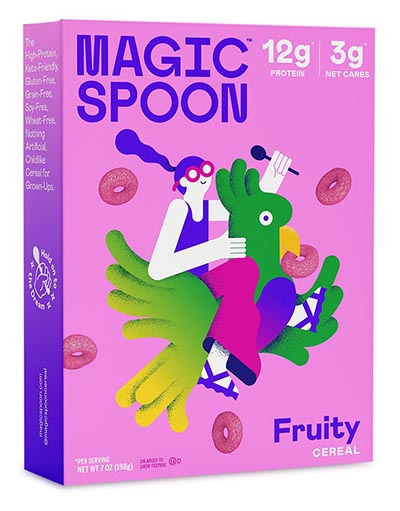
What does Magic Spoon use instead of grains and sugar?
■ Processed protein and fiber. Milk and whey protein isolate, tapioca flour, and processed chicory root fiber stand in for grain. How “real” is that?
■ Low-calorie sweeteners. There’s no acesulfame potassium, sucralose, or aspartame, all of which we rate as “avoid.” (See chemicalcuisine.org.) Magic Spoon’s monk fruit extract hasn’t been well tested in animals, but the fruit has been eaten in China for centuries.
The cereal also gets its intense sweetness from (safe) stevia extract and allulose. Allulose is a naturally occurring sugar that’s poorly absorbed in the gut, so companies don’t have to list it as “sugar” on the Nutrition Facts label. The downside: Too much allulose may lead to nausea, diarrhea, or other GI side effects.
■ Coconut oil. Each ¾-cup serving has enough coconut oil to add 5 grams of saturated fat—a quarter of a day’s limit. We capped Best Bites at 2 grams. (Magic Spoon competitors The Cereal School and Catalina Crunch use unsaturated sunflower oil instead of coconut.)
As for its promised “magic” taste, none of our testers were, um, spellbound. And, anyway, low-carb diets are no magic weight-loss bullet. Why not stick with a scrumptious whole-grain cereal that’s low in sugar instead?
If you want more protein, try a Best Bite like Kashi GO Original, which has as much protein (12 grams) as a serving of Magic Spoon. Or serve any cereal with greek yogurt for a protein-rich parfait.
Go Grainless?
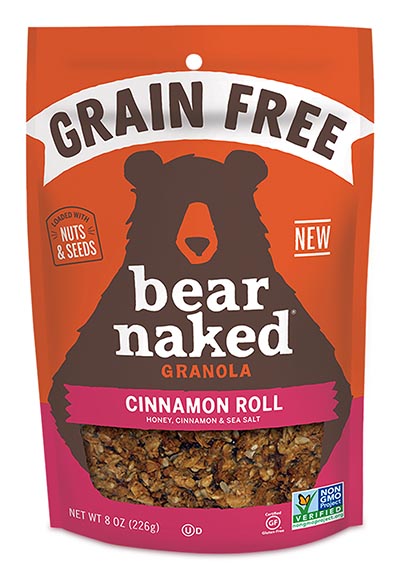
“We may have literally foraged for it, but it’s PALEO FRIENDLY ” saysBear Naked about its Cinnamon Roll Grain Free Granola.
Just don’t confuse “grain free” or “paleo friendly” with low carb. The granola’s second ingredient is honey. A half cup has enough to supply 11 grams (a little over 20 percent of a day’s limit) of added sugar. The rest is mostly coconut plus (healthy) nuts, seeds, and sunflower oil.
Granola’s Achilles’ heel—grainless or not—is added sugar. Most regular Bear Naked granolas, for example, have 10 to 12 grams in just ½ cup. Some better bets:
■ Bear Naked Fit. Yummy, crunchy Toasted Coconut Almond, V’Nilla Almond, and Triple Berry slash the added sugars to just 5 or 6 grams. That’s about as low as it gets.
■ KIND Clusters. Half of KIND’s eight varieties are low enough in total sugars (5 to 8 grams) for a Best Bite. Try the Cinnamon Oat, Dark Chocolate, Raspberry, or Vanilla Blueberry.
Pick a Probiotic?
“Healthy gut” or “may help support healthy digestion,” say cereals with shelf-stable probiotics. Do those bacteria improve everyday GI complaints like constipation or bloating?
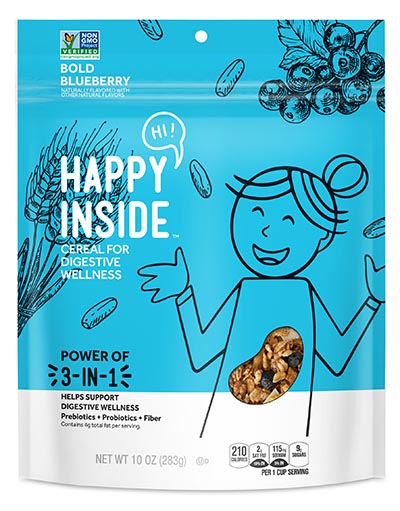
The evidence—largely funded by probiotic manufacturers—is far from solid. And any benefits are modest. For example:
■ Bifidobacterium lactis BB-12. Among 1,248 adults who reported just two to four bowel movements a week, those who took the amount of B. lactis BB-12 in a serving of GoodBelly Probiotics Peanut Butter Crunch daily for four weeks had no more bowel movements than placebo takers.1
■ Bacillus coagulans GBI-30 6086. In a study of 61 adults, those who took 2 billion CFU (colony-forming units) a day for four weeks reported slightly less abdominal pain, but no less gas, bloating, or distension, than placebo takers.2 Neither Effi’s nor Purely Elizabeth’s labels say how much of the bacteria they add to their probiotic granolas.
■ Bifidobacterium lactis HN019. Among 228 adults with constipation, a daily dose equal to a serving of Kellogg’s Happy Inside (1 billion CFU) for four weeks was no better than a placebo for speeding up the movement of food through the colon.3Kellogg’s also adds B. lactis HN019 to its Special K Probiotics Berries & Peaches, but only 65 million CFU per serving, Kellogg told us. That’s not much.
1Br. J. Nutr. 114: 1638, 2015.
2BMC Gastroenterol. 9: 85, 2009.
3Gut Microbes 9: 236, 2018.
The Whole Truth
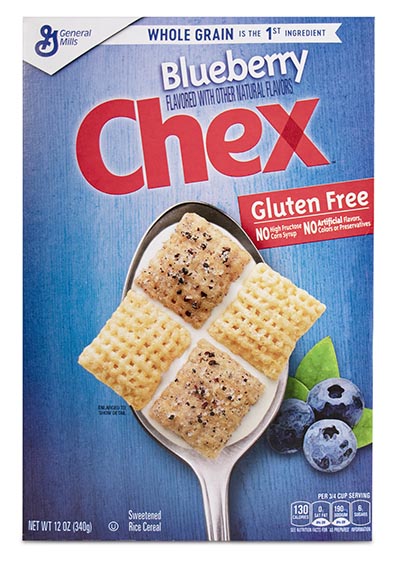
“100% whole grain” is simple. But most of the other claims on cereals aren’t:
■ First ingredient whole grain. Cereal companies love claims like these because they can mean a little or a lot.
Blueberry Chex, for example, boasts that “whole grain is the 1st ingredient” because it has more whole-grain rice than anything else. But its second ingredient is refined rice. Blueberry Cheerios (also made by General Mills) says “first ingredient whole grain oats.” Turns out both of its grains—oats and oat bran—are whole.
■ Grams whole grain. Kellogg’s Smart Start has “25g of whole grain” (in a 64-gram serving) from its whole-grain wheat and oats. But how many grams of refined grain come from its white rice (the first ingredient)? Who knows?
■ Multi-grain. It only means “more than one grain,” so don’t expect much. But companies must know it sounds good. Why else would Smart Start call its flakes “multigrain”? (The first ingredient, rice, isn’t whole grain.)
Multivitamin K?
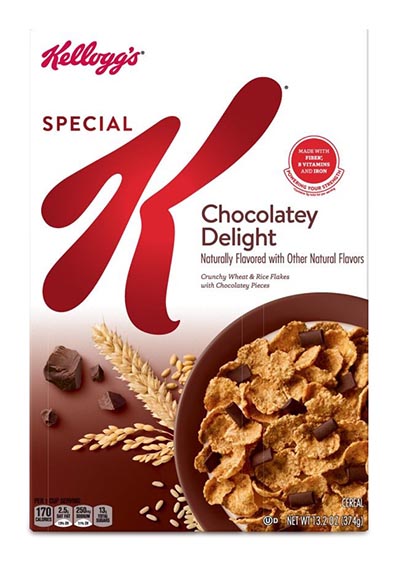
“Every flake bursts with the essential nutrients you need to make you feel strong from the inside," says Kellogg's Special K Chocolatey Delight.
No Special K cereals got a Best Bite because they all have too little whole grain (and most are too sugary). But Special K dresses them up with added vitamins and minerals. For example:
■ Vitamins A, C, and E. “Antioxidants women need,” says the box. Fact: Most studies that gave people those vitamin supplements to prevent cancer or heart disease came up empty.
■ B Vitamins. They’re “essential nutrients to convert food into fuel,” says Special K, which adds 20 percent of a day’s thiamin, riboflavin, niacin, B-6, and B-12. Fact: Most people already get plenty, and more isn’t better.
The folic acid (50 percent of a day’s worth) is a plus for women who may become pregnant. And some people fall short on iron (a serving has 60 percent of a day’s worth) or vitamin D (10 percent). But if you need those or other nutrients, most (non-gummy) multivitamin-and-mineral supplements are more complete.
Photos (top to bottom): svl861/stock.adobe.com, Kaamilah Mitchell/CSPI, Kaamilah Mitchell/CSPI, Bob’s Red Mill Natural Foods, Whole Foods Market, The Quaker Oats Company, Magic Spoon, Kellogg NA Co., HI! Happy Inside, Kaamilah Mitchell/CSPI, Kellogg NA Co.

